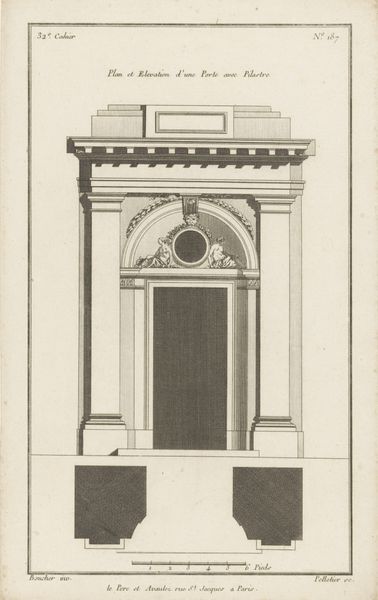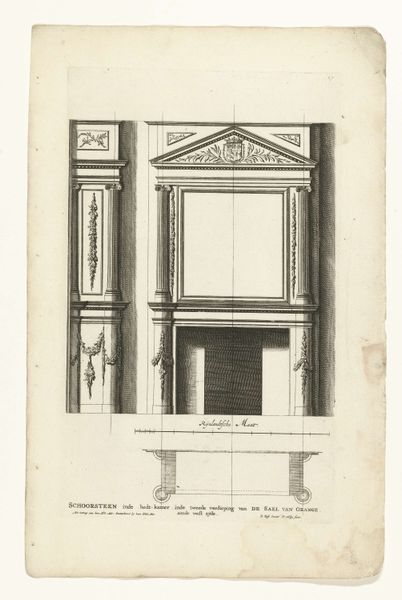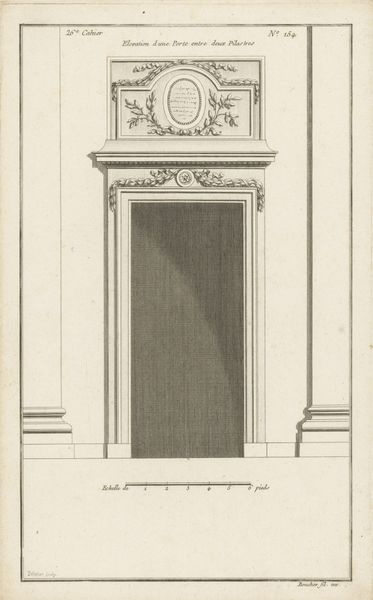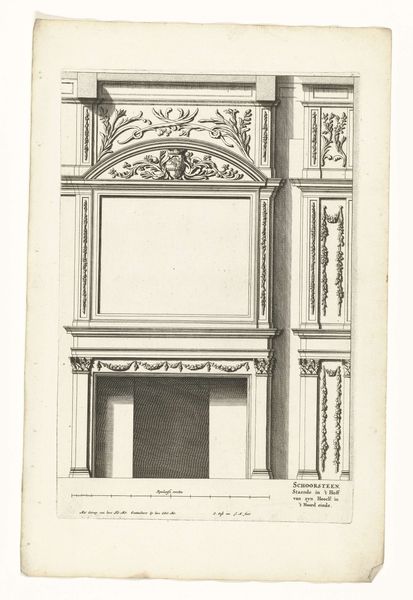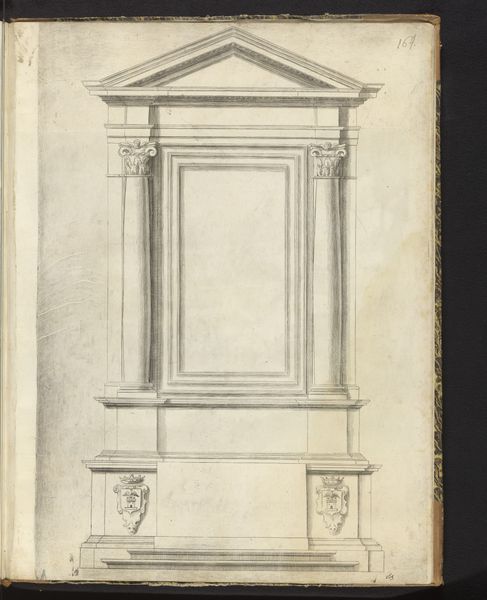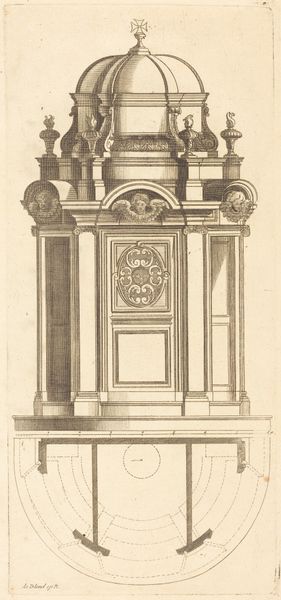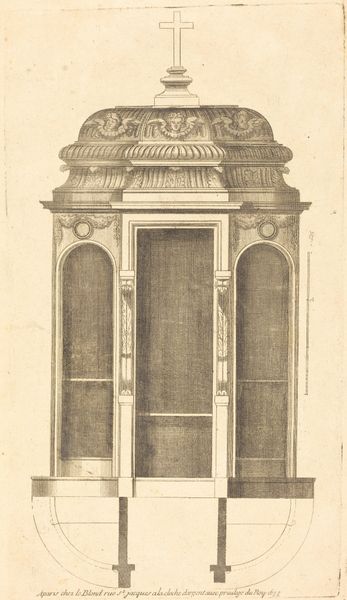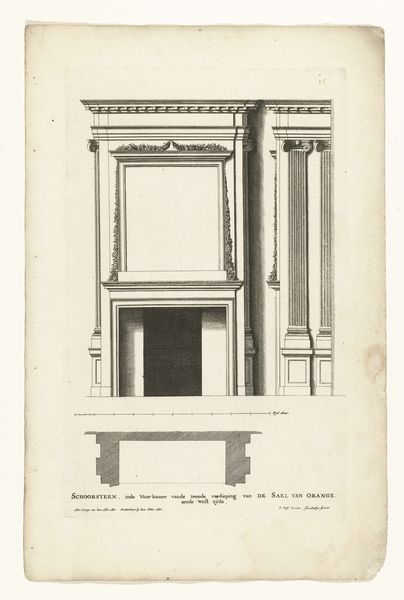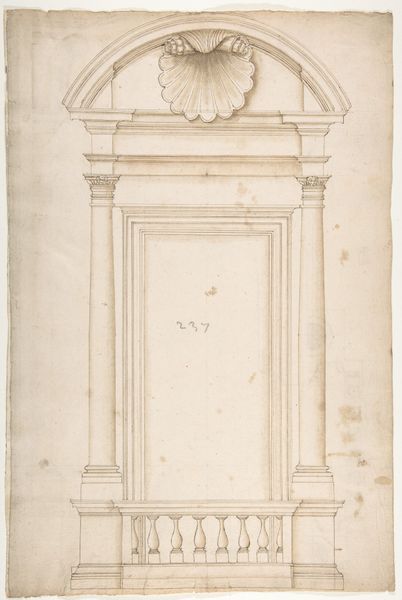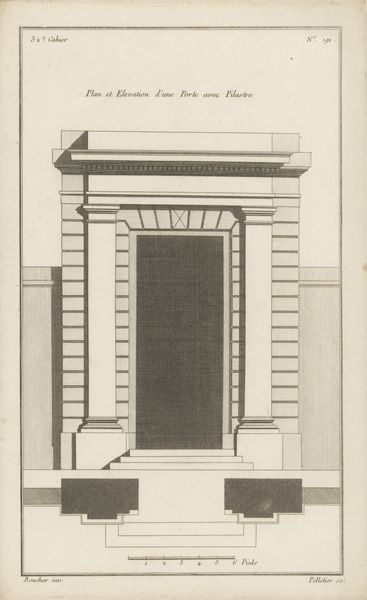
drawing, print, paper, engraving, architecture
#
drawing
#
neoclacissism
# print
#
paper
#
engraving
#
architecture
Dimensions: height 328 mm, width 204 mm
Copyright: Rijks Museum: Open Domain
Editor: This is "Poort met fronton en wapens," or "Gate with Pediment and Weapons," a drawing by Jean Pelletier, created between 1772 and 1779. It’s an engraving on paper, quite formal in its depiction of Neoclassical architecture. I find it cold, almost austere. How do you interpret this work? Curator: The austerity you observe speaks volumes about Neoclassicism's socio-political context. Think about the Enlightenment and the revolutions brewing then. This isn't just an architectural drawing; it's a statement. It's invoking the perceived order and rationality of the ancient world as a means to critique the perceived excesses and decadence of the aristocracy. How does the inclusion of weaponry influence your reading? Editor: I hadn't considered it as social critique. The weapons feel purely decorative, symbols of power like the pediment and columns themselves. Curator: Exactly, symbols of power. But who is wielding that power, and to what end? Consider the placement of these symbols within a domestic space – a "vestibule," according to the inscription. Is it projecting an image of the powerful citizen-ruler that was so central to republican ideology? Or is it a projection of aspirations? What kind of class anxieties can you derive from these iconographic and compositional choices? Editor: That’s a really interesting way of framing it. It's like Pelletier is designing a space not just to inhabit, but to embody a certain political ideal. Curator: Precisely! And that embodiment raises critical questions about who gets to participate in this ideal. Editor: This has definitely broadened my understanding of Neoclassicism. It’s far from just columns and symmetry! Curator: It is so much more; it's about visualising power, and questioning it too.
Comments
No comments
Be the first to comment and join the conversation on the ultimate creative platform.
